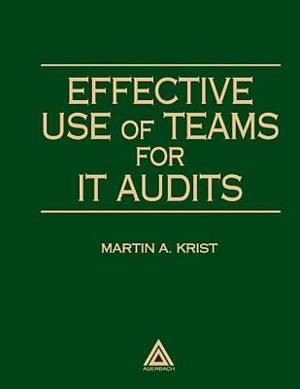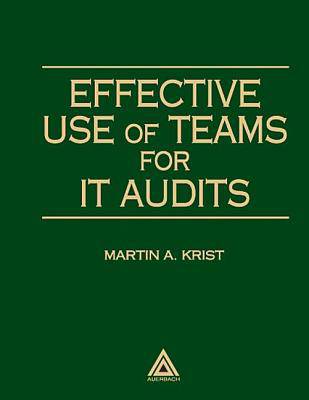
Je cadeautjes zeker op tijd in huis hebben voor de feestdagen? Kom langs in onze winkels en vind het perfecte geschenk!
- Afhalen na 1 uur in een winkel met voorraad
- Gratis thuislevering in België vanaf € 30
- Ruim aanbod met 7 miljoen producten
Je cadeautjes zeker op tijd in huis hebben voor de feestdagen? Kom langs in onze winkels en vind het perfecte geschenk!
- Afhalen na 1 uur in een winkel met voorraad
- Gratis thuislevering in België vanaf € 30
- Ruim aanbod met 7 miljoen producten
Zoeken
Omschrijving
Most organizations find that an empowered team will improve the effectiveness of the IT auditing function. Such a team has the appropriate authority, resources, and skills to perform a project, determine the solution, and implement that solution without outside intervention. Audit management should establish certain guidelines for the teams to follow. Management may approve team assignments, but the team can use whatever resources are necessary to complete that assignment. Effective Use of Teams in IT Audits presents four approaches to ensure the effective use of teams: 1. Assessing team effectiveness. An auditing function can use a self-assessment document to determine whether it is using teams effectively. 2. Organizing and managing teams. Several suggestions are provided for staffing, organizing, and managing these teams. 3. Using teams to conduct reviews during an audit. This six-step approach uses peers to review peers, as opposed to supervisors to control subordinates. The review process provides checklists for use in conducting these peer reviews. 4. Using teams to improve audit processes. A detailed six-step improvement process is provided as a tool for improving audit processes. Team tools are significant ultimate team success. This book includes suggestions for building a team toolbox, and an appendix describing effective team tools.
Specificaties
Betrokkenen
- Auteur(s):
- Uitgeverij:
Inhoud
- Aantal bladzijden:
- 168
- Taal:
- Engels
- Reeks:
Eigenschappen
- Productcode (EAN):
- 9780849398285
- Verschijningsdatum:
- 30/08/1999
- Uitvoering:
- Paperback
- Formaat:
- Trade paperback (VS)
- Afmetingen:
- 210 mm x 285 mm
- Gewicht:
- 426 g

Alleen bij Standaard Boekhandel
+ 540 punten op je klantenkaart van Standaard Boekhandel
Beoordelingen
We publiceren alleen reviews die voldoen aan de voorwaarden voor reviews. Bekijk onze voorwaarden voor reviews.









